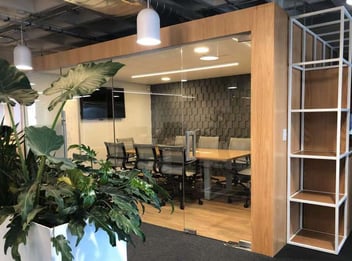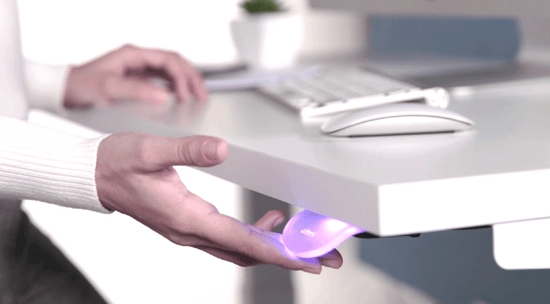Design Your Meeting Room for Successful Meetings
Meeting rooms are undoubtedly one of the most important spaces in any company. They are the meeting points where crucial decisions are made and fundamental strategies for organizational success are discussed. Therefore, these rooms must be optimally designed to foster productivity and collaboration among teams.
.webp?width=1200&height=700&name=sala-de-juntas-exitosa%20(1).webp)
3 Tips for Achieving Success in Your Meeting Room
Meeting rooms should be comfortable, functional, and inspiring spaces. Here are some fundamental tips for designing this workspace:
1. Proper circulation: When designing a meeting room, it is crucial to ensure that it is a spacious area that allows for user movement. Smooth circulation facilitates interaction between participants and prevents the space from feeling overwhelming.
Consider that the ideal space per seat measures at least 75 cm per person to ensure that each individual has their own space and can move freely without feeling restricted.
2. Good lighting: Lighting plays a fundamental role in the concentration and energy of the team during meetings. Integrating natural light whenever possible, depending on the time the room is used, can improve the atmosphere and increase productivity.
You might be interested in: The Importance of Proper Lighting in the Office.
3. Connectivity system: Make sure to have a good connection network that facilitates the use of digital tools during meetings. Integrating technology such as video conferencing systems and interactive screens can enhance the efficiency of discussions and enable real-time collaboration.
Additional Considerations for Furniture
To choose the right furniture for the meeting room, it is important to identify the number of people who will attend meetings in the company and thus define the size of this room. Next is to choose furniture according to functionality to ensure that participants feel comfortable during long working hours. For example, you can choose to incorporate an acoustic isolation system: many meeting rooms are equipped with technologies to prevent echo during meetings or the entry of noise from outside. Good acoustic isolation ensures that discussions are clear and that participants can concentrate without distractions.
In summary, the design of a successful conference room involves considering aspects such as proper circulation, comfort of spaces, lighting, acoustic isolation, and technological connectivity. By following these three tips, you can create an environment conducive to effective decision-making and collaboration among teams, which will contribute to business success. Additionally, having a suitable meeting space like the one you can create with Gebesa can enhance the quality and effectiveness of your business meetings.



.webp?width=352&name=aprendizaje-continuo-empresarial%20(1).webp)

